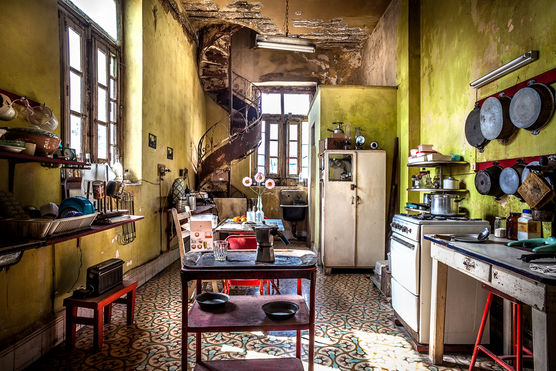An awful lot has changed for artists since the inception of the Internet. Most notably, artists now have far more options than ever for presenting themselves and their art to the world. Though the traditional gallery system is still in place, galleries no longer control the show the way they once did and for the first time in forever, having gallery representation is not necessarily the best and only way to go for all artists. In spite of all this, way too many artists continue their relentless single-minded quests for gallery representation without even realizing they can now do for themselves pretty much everything that galleries can do for them… and more.
The number one reason for the decline in gallery influence is that artists can now communicate directly with the public and advocate on their own behalves in ways that only galleries could do for them pre-Internet. For the first time in history and in formats that barely even existed only a few years go, artists can now attract thousands, tens of thousands and even hundreds of thousands of followers almost entirely on their own. Back in the old days, art world success used to be all about which handful of galleries had the most money to spend on the largest ads and best positions in major art publications, which handful of galleries the handful of newspaper and magazine art critics visited and chose to anoint as legitimate contenders, and which handful of artists that handful of galleries decided their clienteles should pay attention to. Even though this all still happens, it’s not such a big deal anymore. A whole huge fantastic unbelievable exciting ever-evolving new world is now accessible to pretty much all artists and art buyers, and the days of being ruled by the few are long gone. The best news is that the best art is still what attracts the most attention, regardless of where it’s being made or shown or who’s doing the showing.
Artists can now do practically everything online that galleries once had to do for them, and often in much larger ways. Back in the day, galleries were pretty much the only places where people could buy art. Direct communication between artists and buyers was largely nonexistent. Trying to locate artists was difficult at best, assuming you could find their contact information. And if contact was made, being able to meet and speak with them and see their art was often a logistical nightmare. As for those countless artists who lived outside of major markets, they had hardly any way of letting people know they even existed, let alone showing their art. Today that’s all changed. The two primary functions of galleries– providing artists with exposure for their art and providing collectors and buyers with access to that art– are no longer necessary or even relevant to doing business as an artist.
Artists are somewhat complicit in allowing so many galleries to survive for so long, based on the belief or more accurately the fantasy that a world exists where all they have to do is make art in their studios while art galleries or agents or representatives do all the dirty work and handle everything else. Regardless of what trade or profession you’re in, you have to sell yourself and your skills… and that includes artists. If you think your art deserves to be shown in public and owned by buyers or collectors or anyone else, you have to make a case for yourself. And the Internet– social networking websites in particular– have become the perfect places to do that.
Sure, some people continue to argue that galleries will always have a role for all those artists who lack the marketing skills necessary to cultivate collectors or sell their art. They say making art is generally a solitary pursuit while marketing it is social, and they’re partly right, but social networking is not only about marketing; it’s about artists being themselves, about introducing the world to the personalities behind the work. The most amazing development is that in most cases, artists can now do this to a far greater extent than galleries can do for them.
And now for some facts. For the most part, the only artists galleries spend any significant amount of time talking about are their top sellers. Even though you may have gallery representation, that doesn’t mean much for most artists. Ask pretty much any gallery owner and they’ll tell you that only a few of their artists account for the bulk of their sales. And if you’re not one of those few, the gallery will not generally spend a lot of time promoting you. Online, you can promote yourself simply by being yourself, all day every day in front of everyone everywhere who owns a computer or mobile phone and has access to the Internet.
Traditionally, galleries have also been a necessary step along the way for artists who want to have their art exposed to museums, institutions, critics, curators, corporate collections and the higher echelons of the art world. But that too has changed. People in the know search and shop online all the time including collectors, curators, investors, speculators, gallery owners and anyone else who has an interest in art… including museum personnel. Everyone’s on the hunt for the next great art stars and they know they can cover far more territory far faster on their computers or cell phones than they can by physically shopping the galleries or visiting artists at their studios.
For artists, the chances of being discovered online are better than ever. All kinds of art websites, blogs, publications and other online venues are continually beating the bushes for fresh new quality art and artists to introduce to their readers and feature in articles, interviews, videos and more. As a result, more and more artists are being recognized for their skills, talents, personalities and art without traditional galleries playing major roles in that recognition.
And now for the most astonishing news. In many instances, the traditional relationship between galleries and artists has completely flipped. In the old days, artists had to present themselves and their art to galleries and hope and pray for a portfolio review. The gallery was the one in control; artists needed galleries to call attention to their art. Now artists with impressive online profiles and large numbers of followers have substantially more control over what galleries they show with or whether they even show with galleries at all. Galleries want to show their art not only for traditional reasons, but also because they know that along with these artists come their fans and followers and exposure to whole new audiences en masse.
While a typical gallery might have several thousand online followers or maybe somewhat more, it’s no longer that unusual for an artist to have tens or even hundreds of thousands of fans. There’s nothing particularly exciting about following most galleries online anyway. Pretty much all they do is post images of art by artists they represent, while artist pages are often rich in content, visuals and narratives, and rightfully attract tons more viewers.
Assuming they’re being frank, the majority of gallery owners will tell you that most new online viewers find their websites not by searching their galleries by name, but rather by searching the names of artists they happen to represent. The upshot of all this is that artists with substantial online followings have far more leverage now than they used to in terms of what art they show and where they choose to show it. Online followers have become the new art world currency, those who buy are the gold standard, and social networking art stars are beginning to leverage that in terms of who or even if they decide to show with one gallery or another.
Now before you get too excited about all of this, a little tempering is in order. As wonderful as online opportunities are these days, the Internet is no panacea, not all artists get to live happily ever after, and maintaining an engaging online profile takes plenty of good old-fashioned time and hard work just like anything else in life, not to mention the fact that you have to produce enough quality art on a consistent enough basis to attract, impress and win the masses over. In terms of fame and fortune, the same small percentage of artists will likely continue to become as famous as they did in pre-Internet days. What has changed is that if you make good art and are determined to go public, your chances of getting recognized for your talents and attracting a following have definitely improved, no matter where you live, what your circumstances, how few or many degrees you have from what schools, or whether you’ve ever shown at a gallery.
As for you disbelievers, no matter how much you despise the Internet, how uncool you think it is, how much better you think you are than having to show your art online, how mercilessly they brainwashed you in art school, or how inscrutable or invisible you think your online profile has to be in order to succeed in the art world (a perspective which makes absolutely zero sense), take a moment to reflect. The Internet is by far the best thing that has ever happened to artists in terms of getting their art out in front of the public, and nothing else even comes close. Nowhere else can artists present compelling arguments for why their art deserves attention and consideration, simply by documenting and inviting us into their artistic lives, like they can online. But wait; there’s more.
For those of you who may not get along well with people, are uncomfortable in social situations, or have any other aversions to real-life interactions, the Internet has the capacity to be your savior. You can do pretty much everything from the comfort and protection of your own home or studio without ever having to engage a single human being face-to-face, at least at the start. What this all means is that there’s no longer any excuse for any artist anywhere not to try and realize their full potential. Why stop yourself before you even start when you have such powerful tools at your fingertips? You never know what’s possible unless you try and there’s no time like the present to start.

(art by Bernhard Hartmann)










Leave a Reply